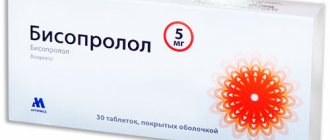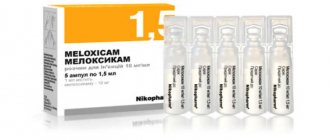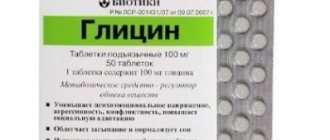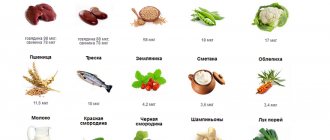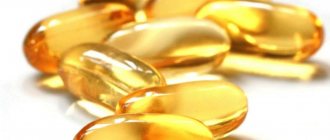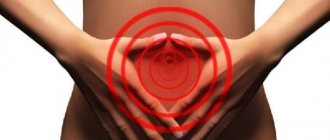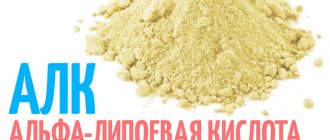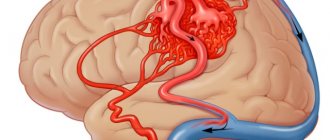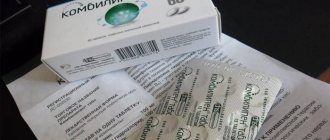© bit24 — stock.adobe.com
Share:
Thiamine (vitamin B1, antineuritis) is an organic compound based on two heterocyclic rings connected by a methylene bond - aminopyrimidine and thiazole. It is colorless crystals, highly soluble in water. After absorption, phospholation occurs and the formation of three coenzyme forms - thiamine monophosphate, thiamine pyrophosphate (cocarboxylase) and thiamine triphosphate.
These derivatives are part of various enzymes and ensure the stability of amino acid conversion reactions and activate protein, fat and carbohydrate metabolism, stimulate hair growth and normalize skin condition. Without them, the full functioning of vital human systems and organs is impossible.
The value of thiamine for athletes
In the training process, achieving set goals directly depends on the endurance and functional readiness of the athlete for heavy physical activity. For this, in addition to a balanced diet and special diets, the body must be constantly saturated with vitamins, including thiamine.
In any sport, the condition for success is the good psycho-emotional state of the athlete. The beneficial effect of vitamin B1 on the nervous system helps with this. It also stimulates metabolism, promotes accelerated energy production and rapid muscle growth. Therefore, maintaining the required concentration of this compound in the blood and tissues is a prerequisite for the effectiveness of strength sports.
By participating in the processes of hematopoiesis and oxygen transport to cells, the nutrient has a positive effect on endurance, performance and recovery time after intense exercise. Such effects of the vitamin improve the tolerance of monotonous and long-term physical exercise, which increases the training efficiency of long-distance runners, swimmers, skiers and other athletes of similar specializations.
The use of thiamine maintains muscle tone and good mood, helps to increase strength and increase the body's resistance to external harmful factors. This ensures the athlete’s readiness for stress loads and allows him to intensify the training process without harm to health.
Functions of vitamin B1 (thiamine)
Vitamin B1 is an organic compound. It is insoluble in alcohol, but disintegrates in water. The substance can occur in four different forms. Thiamine diphosphate is one of the most common in the human body. About 30 grams of this compound can accumulate in body tissues (mainly muscle tissue).
Thiamine performs the following functions in the human body:
- is directly involved in carbohydrate, protein, and fat metabolism;
- participates in the synthesis of ATP - the energy necessary for intracellular processes;
- promotes the conversion of carbohydrates into glucose, which the body requires for vigorous activity;
- promotes the breakdown of carbohydrates and fats supplied with food;
- helps to form functional blood cells;
- promotes the full growth and development of systems and organs;
- responsible for the normal functioning of digestion;
- normalizes heart function;
- protects the nervous system from stress factors, as it participates in the formation of nerve endings of the myelin sheath, which protects cells from destruction;
- increases the body's protective functions;
- improves nutrient absorption by maintaining smooth muscle tone in the digestive system;
- has a positive effect on the central nervous system, and a lack of this compound leads to negative consequences for cognitive abilities;
- responsible for the normal condition of the visual organs.
Thiamine is often called an anti-stress vitamin, which fully reflects its most important role for the human body. Apathy due to a lack of this substance develops due to a general loss of strength and weakness, which leads to a depressive state.
Daily requirement
The speed and intensity of biochemical processes in the body depends on the gender, age and style of behavior of a person. In children, the daily requirement is small: in infancy - 0.3 mg, by adulthood it gradually increases to 1.0 mg. For an adult man leading a normal lifestyle, 2 mg per day is enough; with age, this norm decreases to 1.2-1.4 mg. The female body is less demanding of this vitamin, and the daily intake ranges from 1.1 to 1.4 mg.
Successful exercise requires an increase in thiamine intake. In some cases, the dosage can be increased to 10-15 mg.
general characteristics
Thiamine is needed by the human body, like other B vitamins. After entering the body, this compound is converted into thiamine pyrophosphate, which is involved in metabolic processes. It belongs to water-soluble substances.
Composition and active ingredients
This medicine is available in the form of a ready-made solution for injection. It is a yellowish or colorless liquid with a characteristic odor. Vitamin B1 ampoules contain approximately 0.05 g of thiamine hydrochloride. The auxiliary components included in the solution include water and unithiol.
The effect of vitamin on the human body
Vitamin B1 is involved in many metabolic processes. Without it, protein and lipids cannot be absorbed. In addition, this compound is involved in maintaining the normal activity of brain structures. Intake of a sufficient amount of this substance into the body helps improve concentration and memory. The vitamin protects nerve endings from damage.
Thiamine promotes the activation of mental activity. This substance helps eliminate the effects of alcohol intake. Without thiamine, the normal functioning of the body is disrupted. With a deficiency of this substance, the condition of blood vessels and the heart worsens. If a sufficient amount of this compound does not enter the body for a long time, a person develops persistent tachycardia. Other possible signs of vitamin deficiency include the following:
- worsening sleep;
- breathing problems;
- weakening of memory;
- depression;
- movement coordination disorder;
- decreased appetite;
- increased irritability;
- headache;
- numbness of the limbs;
- deterioration of cognitive abilities;
- kidney dysfunction.
In addition, stool disorders and deterioration of the nervous system are possible. The pain threshold decreases. A person can lose weight quickly. Muscles lose tone.
Vitamin absorption
Absorption of this substance occurs in the intestines. In this case, within just 30 minutes it spreads through the tissues. If thiamine is administered intramuscularly, the absorption of vitamin B1 occurs faster. It is believed that the human body can receive no more than 10 mg of this compound per day. The absorption process is negatively affected by alcohol and coffee.
Harmful properties
In reality, thiamine cannot cause harm, because The human body is not capable of accumulating it. Excess substance is excreted in urine and feces. At the same time, B1 injections can cause adverse reactions.
Consequences of thiamine deficiency
Only a small portion of vitamin B1 is synthesized in the intestines. The required amount comes from outside with food. A healthy body contains about 30 g of thiamine. Mainly in the form of thiamine diphosphate. It is quickly removed and no reserves are formed. With an unbalanced diet, problems with the gastrointestinal tract and liver, or increased stress loads, its deficiency may occur. This negatively affects the condition of the entire body.
First of all, this affects the functioning of the nervous system - irritability or apathy, shortness of breath when walking, a feeling of unmotivated anxiety and fatigue. The psycho-emotional state and intellectual abilities deteriorate. Headaches, confusion and insomnia may occur.
With prolonged deficiency, polyneuritis develops - decreased sensitivity of the skin, pain in different parts of the body, up to the loss of tendon reflexes and muscle atrophy.
From the gastrointestinal tract, this is expressed in a decrease in appetite, up to the onset of anorexia and weight loss. Peristalsis is disrupted, and frequent constipation or diarrhea begins. There is an imbalance in the functioning of the stomach and intestines. Abdominal pain, nausea and vomiting occur.
The cardiovascular system also suffers - heart rate increases, blood pressure decreases.
Long-term thiamine deficiency provokes the development of serious diseases. Particularly dangerous is a nerve disorder called beriberi, which if left untreated can lead to paralysis and even death.
Chronic alcohol consumption interferes with the production and absorption of vitamin B1. In such cases, its deficiency causes the appearance of Gaye-Wernicke syndrome, in which the brain organs are affected and encephalopathy can develop.
From all of the above, it follows that if such signs appear, you should consult a doctor to clarify the diagnosis, and, if necessary, undergo a course of treatment with thiamine-containing drugs.
Indications for use
Indications for use of the vitamin:
- hypovitaminosis and vitamin deficiency;
- low body weight;
- degenerative diseases of the nervous system;
- disorders of the gastrointestinal tract, which are accompanied by a decrease in the intensity of nutrient absorption;
- profuse vomiting;
- prolonged psycho-emotional stress, stress;
- dermatitis;
- acute intoxication of the body;
- chronic liver pathologies;
- diabetes;
- peptic ulcers of the stomach and duodenum;
- intestinal atony;
- endarteritis.
During pregnancy and breastfeeding, thiamine can be used in an amount of 1.5-2.1 mg/day, which is higher than the average dosage for the female body. The vitamin does not have a teratogenic effect on the fetus and does not inhibit milk production in the female body. To avoid allergic reactions, it is not recommended to exceed the prescribed dosage.
It is prescribed for children for neurological disorders, hypoxia, and birth injuries. For children under 8 years of age, a concentration of 2.5% is used. For children over 8 years of age, the product is used at a concentration of 5%.
Consequences of deficiency:
- peripheral nerve degeneration, neuralgia;
- deterioration of blood supply to brain tissue;
- memory impairment;
- sleep disorders;
- increased fatigue;
- irritability;
- myocardial dystrophy;
- changes in carbohydrate metabolism;
- loss of appetite;
- epigastric pain.
The role of the vitamin in the body and how to take it correctly is described in detail in the video:
Dosage forms and their use
Vitamin B1 produced by the pharmaceutical industry is classified as a medicine and is registered in the RLS (Register of Medicines of Russia). It is produced in different versions: in tablets (thiamine mononitrate), in the form of a powder or solution for injection (thiamine hydrochloride) in ampoules with different concentrations of the active substance (from 2.5 to 6%).
The tablet and powder product is consumed after meals. If there are problems with digestion or if it is necessary to administer large doses, injections are prescribed - intramuscularly or intravenously - to quickly restore the concentration of the vitamin.
© ratmaner — stock.adobe.com
Each drug is accompanied by instructions for use, which contain recommendations on dosage and rules of administration.
special instructions
Before you start using vitamin B1 in ampoules, you need to test for allergies. If half an hour after the test there is no reaction from the skin, you can give an injection of vitamin B1.
B1 injections are carried out no earlier than 12 hours after the administration of pyridoxine, since it enhances the allergenic effect of the first. The vitamin composition should be administered intravenously slowly.
At the beginning of the course, small doses are administered with a gradual increase. This is necessary so that the composition does not cause a sharp reaction. In the absence of allergies, the dosage is increased.
The exact daily dose is selected individually. The state of the patient’s gastrointestinal tract, stress level, hormonal levels, and diet must be taken into account.
B1 should not be mixed with benzylpenicillin or streptomycin in one syringe, as this will lead to the destruction of the antibiotics. Mixing with B3 leads to the destruction of B1. Do not mix the product with barbiturates, iodides, citrates, copper salts, carbonates and tannic acid.
What foods contain vitamin B1
Most foods in the daily diet contain significant amounts of thiamine. The record holder among them are: nuts, legumes, wheat and its processed products.
| Product | Vitamin B1 content per 100 g, mg |
| Pine nuts | 3,8 |
| Brown rice | 2,3 |
| Sunflower seeds | 1,84 |
| Pork (meat) | 1,4 |
| Pistachios | 1,0 |
| Peas | 0,9 |
| Wheat | 0,8 |
| Peanut | 0,7 |
| Macadamia | 0,7 |
| Beans | 0,68 |
| Pecan | 0,66 |
| Beans | 0,5 |
| Cereals (oatmeal, buckwheat, millet) | 0,42-049 |
| Liver | 0,4 |
| Bakery products made from wholemeal flour | 0,25 |
| Spinach | 0,25 |
| Egg (yolk) | 0,2 |
| Rye bread | 0,18 |
| Potato | 0,1 |
| Cabbage | 0,16 |
| Apples | 0,08 |
© elenabsl — stock.adobe.com
Instructions for use of vitamin B1 in ampoules
Thiamine should be used strictly according to instructions. This substance belongs to the low-hazard class, but should only be used on the recommendation of a doctor.
Treatment regimens and dosage
The treatment regimen depends on the nature of the pathological condition the person has. The recommended duration of therapy with this drug for liver diseases is 30 days. For most pathologies, the drug is prescribed in a dose of 10 g 3 times a day. To eliminate vitamin deficiency, thiamine is administered 2 times a day, 2.5 mg. Treatment with injections in this case lasts 3-5 days. Subsequently, the patient is transferred to the tablet form.
How to inject vitamin B1
The specialist giving the patient an injection must wear disposable seals. Before injection, wipe the ampoule with a cotton swab soaked in alcohol, break off its tip, and draw the solution into a syringe. The injection is performed in the buttock area, deep into the muscle. First, the skin should be treated with an antiseptic.
If IV use is necessary, the drug is injected into the vein of the elbow in a dose not exceeding 0.5 mg.
Interaction with other substances
Thiamine combines well with most medications. The vitamin is not recommended for use in combination with pyridoxine. It prevents the conversion of thiamine to its active form.
Possible side effects
Vitamin B1 extremely rarely causes adverse reactions. In this case, there is a possibility of anaphylactic shock and Quincke's edema. In case of individual intolerance, angioedema may develop. Other allergic reactions commonly observed with thiamine administration include itching and urticaria. In addition, some patients experience increased sweating and a deterioration in their general condition.
Thiamine-rich foods
The human body is capable of accumulating about 30 mg of vitamin B1. Most of this substance is found in skeletal muscles, with small doses also stored in the brain, liver, kidneys and heart. A small amount of thiamine is produced by the intestinal microflora, but it is not enough to meet the daily requirement. The main part of the vitamin enters the gastrointestinal tract with food. Among the products rich in it are:
- pork and bacon;
- potatoes, cauliflower and green beans;
- yeast;
- pine nuts and pistachios, peanuts;
- porridges: buckwheat, oatmeal, millet groats, brown rice;
- peas, beans, lentils and soybeans;
- offal;
- chicken eggs;
- oranges.
Since the amount of thiamine accumulated by the human body is not enough for long-term use, it is advisable to consume some of these products every day. If necessary, you can supplement them with artificial vitamin B1, which is sold in pharmacies.
Side effects
Is it possible to overdose on vitamin B1? Is thiamine dangerous in large quantities?
To date, there have been very few confirmed cases of serious side effects associated with thiamine. Consuming an excess amount at one time is not a concern since the vitamin is water-soluble and it is believed that only a small amount of such a large dose will be absorbed by the body.
Excess thiamine is excreted from the body through urine within several hours. Taking additional vitamin B1 supplements does not harm the body, but it is not one of the most important nutrients to consume in supplement form.
Side effects
Intramuscular injections of the drug, especially in large doses, can cause an allergic reaction and even anaphylactic shock. Administration of thiamine intramuscularly usually causes severe discomfort, and in some cases patients experience sweating and heart palpitations. Thiamine should be used with caution in women in the pre- and post-menopausal periods, as well as people suffering from alcoholism.
Generally speaking, vitamin B1 in the thiamine preparation is a substance that is associated with the functioning of almost all organs and systems. Therefore, maintaining a normal amount of it helps a person avoid the development of many diseases (for example, pellagra), as well as successfully resist the stress and nervous shock that each of us regularly faces.
Let's determine how to get as much Thiamine as possible from foods, such as rice, advice from a nutritionist:
Medicines
Vitamin B1 is widely used in medicine and medical practice. It is produced in the form of dragees, tablets, capsules with or without shells. Thiamine-based medications are used
- gastrointestinal disorders: constipation and diarrhea caused by impaired muscle tone, nausea and vomiting, appetite disturbances leading to excessive weight loss and anorexia, chronic gastritis;
- cardiovascular diseases: ischemia, atherosclerosis, myocardial dystrophy, deficiency anemia, rheumatic carditis, heart failure, endarteritis;
- disturbances in the functioning of the brain and nervous system: anxiety, excessive irritability, apathy and weakness, neuropathic diseases, encephalopathy, neuritis and neuralgia (inflammation of the nerves with and without loss of sensitivity), as well as polyneuritis;
- muscle weakness, gait and coordination problems;
- leucinosis;
- hepatitis caused by a viral infection;
- thyrotoxicosis;
- radiculitis;
- skin diseases: pyoderma, lichen, psoriasis, eczema.
Detailed instructions for the use of thiamine in tablets with dosages and contraindications can be found in the packaging of a specific medicine from a specific brand. In addition to treating various diseases, they are also used for hypovitaminosis and vitamin B1 deficiency and for the prevention of these conditions.
In medicine, drugs are also used in the form of injections for intravenous and intramuscular administration. The form of vitamin B1 used in them is called cocarboxylase.
The drugs are used in the treatment of such pathologies:
- alcohol poisoning;
- Leigh's syndrome;
- complete or partial muscle paralysis;
- metabolic acidosis;
- diabetic coma and other precomatose states caused by lack of insulin;
- liver, kidney and respiratory failure;
- eclampsia and preeclampsia;
- overdose of barbiturates;
- infectious diseases: typhoid fever, paratyphoid fever, diphtheria, scarlet fever;
- cardiovascular diseases: arrhythmia, coronary heart disease accompanied by coronary circulation disorders, myocardial infarction, heart failure.
Vitamin B1 deficiency is a dangerous condition that can provoke the development of many serious diseases and disorders, therefore it is necessary to begin eliminating it as early as possible. It is worth taking care of preventive measures, such as proper nutrition and limiting the consumption of alcoholic beverages. Every person needs thiamine for normal functioning, which is why it is so important to monitor the presence of the required amount in the body.
Diabetes and Thiamine (vitamin B1)
Vitamin B1 during pregnancy
Thiamine, along with other vitamin and mineral compounds, is necessary for the full growth of the fetus and its intrauterine development. It is used for the normal functioning of all metabolic processes. Vitamin B1 is responsible not only for the energy supply of the baby’s body, but also takes an active part in the process of formation of its nervous tissue. In addition, thiamine ensures the formation of a healthy heart, blood vessels and muscle fibers.
It is no less important for the pregnant woman herself, since it is involved in the functioning of the nervous system and is necessary to maintain the mental and physical activity of the expectant mother. It also promotes rapid wound healing. Some experts claim that thiamine is the “optimism vitamin” and improves mood. This, of course, is also important for bearing a healthy child.
Discovery of Thiamine
At the end of the 19th and beginning of the 20th centuries, the Far East was struck by an epidemic that claimed lives. The beriberi disease (translated as “I can’t, I can’t”) was accompanied by severe weakness, lack of appetite, and agitation. Military doctors noticed that the disease developed with poor food, and as soon as meat, powdered milk, and beans were added to the diet of sick soldiers, a decrease in the symptoms of the disease was immediately observed.
Upon further examination, doctors determined that the disease was associated with vitamin deficiency. Its development was led to the consumption of food, where white polished rice predominates. With observation, doctors noted and suggested that the shell of dark rice contains some substance necessary for metabolism in the body. Practice has proven that rice bran helped patients with vitamin deficiency.
Vitamin B1 is the first of the B group, discovered by Jansen and Donath in 1926. In 1936, Robert R. Williams described the chemical structure and synthesized a new vitamin, giving it the name thiamine.
Thus, the discovery of thiamine revolutionized the treatment of “wet” vitamin deficiency, because thiamine quickly coped with the symptoms of cardiac manifestations of the disease.
The story of the mysterious death of crocodiles
Physico-chemical properties of vitamin B1
Thiamine crystals (micrograph)
Thiamine is a water-soluble substance with the chemical formula C12H17N4OS. There is also a fat-soluble form of vitamin B1 - benfotiamine (C₁₉H₂₃N₄O₆PS). Thiamine is a fairly stable compound and is destroyed only by prolonged exposure to high temperatures.
There are several forms of the vitamin, which differ not only in chemical structure, but also in biological activity:
- unphosphorylated form;
- monophosphate form;
- diphosphate form (the most common form in the body);
- triphosphate form.
The benefits of vitamin B1
Thiamine is a participant in a huge number of metabolic processes in the tissues of the body, so its importance is extremely high. Being a coenzyme in biochemical reactions, vitamin B1 regulates the metabolism of carbohydrates, proteins and fats, and helps increase energy production.
Thiamine is of great importance for the nervous, cardiovascular and muscular systems. It ensures the normal process of nerve impulse transmission, since it is involved in the synthesis of the neurotransmitter acetylcholine. Has a strengthening and calming effect on the central nervous system. Healthy muscles and a strong heart are also the merit of thiamine, which, in addition to the innervation of muscle tissue, ensures complete metabolic processes in it.
B1 is also a “protective” vitamin that protects cellular structures from the aggressive effects of lipid peroxidation. Vitamin B1, with the participation of folic acid and cyanocobalamin, ensures the synthesis of methionine, an amino acid that perfectly removes toxins from tissues. Thiamine indirectly affects the digestion process, skin and hair health, normal mental development of children and their growth, and ensures the health of the genital organs.
Factors that interfere with the absorption of thiamine
In order to fully experience the beneficial effects of vitamin B1, it is not enough to increase the consumption of these foods; you must also avoid antagonist foods that interfere with the absorption of thiamine:
- Tea and coffee: They have a diuretic effect and tend to remove, along with water, also water-soluble vitamins such as thiamine.
- Fresh seafood: Some shellfish and oysters contain an enzyme that can destroy vitamin B1.
- Alcohol: blocks intestinal functions by affecting the absorption area of thiamine and increases its release. Those who consume large amounts of alcohol also have a very poor diet and are at increased risk of vitamin B1 deficiency.
- Tobacco: significantly reduces the absorption of vitamin B1 and destroys molecules within the body.
- Appetite suppressants: These can negatively affect a person's overall diet and therefore their vitamin B1 intake.
- Diuretics: increase thiamine excretion in urine.
- Estrogens: affect metabolic processes. For those taking birth control pills, it is advisable to supplement the diet with dietary supplements containing B vitamins.
- Supplements that affect intestinal function: They can affect the absorption of vitamin B1, which occurs specifically at the intestinal level.
Does vitamin B1 deficiency affect vegetarians?Until recently, it was thought, incorrectly, that a vegetarian diet might be responsible for thiamine deficiency. However, as described above, many plant foods contain vitamin B1. |
Compatibility with other substances
- Thiamine should not be combined with solutions containing sulfites, as it will disintegrate.
- B1 and B6 enhance each other's effect.
- Long-term use of anticonvulsants will lead to thiamine deficiency.
- Interaction of thiamine with carbonates, citrates, barbiturates, and copper compounds is not recommended.
- Vitamin B1 loses its stability in alkaline and neutral solutions.
With alcohol
Drinking alcohol reduces the rate of absorption of thiamine.
Vitamin B1 deficiency
In developed countries, vitamin B1 deficiency is rare because people are able to eat a varied diet and consume at least small amounts of thiamine-rich foods. However, with prolonged adherence to strict diets, thiamine reserves are depleted, which entails the appearance of hypovitaminosis B1 with characteristic symptoms.
- Beriberi disease (described at the beginning of the article);
- Korsakoff-Wernicke syndrome (Gaye-Wernicke);
- Weakness and muscle atrophy up to cuts and paralysis;
- Inflammation of nerve fibers and decreased mental activity, decreased memory, disturbances in orientation in space and time, visual disturbances;
- Digestive disorders and the appearance of ulcerative-erosive lesions on the mucous membranes.
- Disorders of the heart and blood vessels up to the development of heart failure.
- The appearance of neurodermatological diseases such as psoriasis or eczema.

